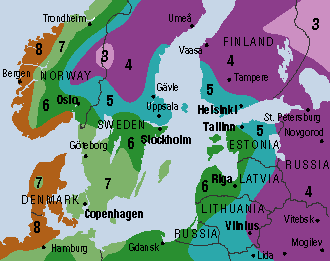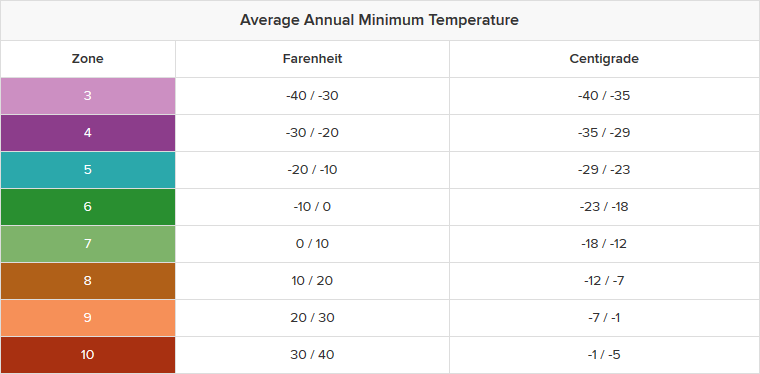It appears that you're running an Ad-Blocker. This site is monetized by Advertising and by User Donations; we ask that if you find this site helpful that you whitelist us in your Ad-Blocker, or make a Donation to help aid in operating costs.
▼ Sponsored Links ▼
▲ Sponsored Links ▲
▲ Sponsored Links ▲
Region Information Data for Estonia (EE)
Estonia, officially the Republic of Estonia (Estonian: Eesti Vabariik), is a sovereign state in Northern Europe. It is bordered to the north by the Gulf of Finland with Finland on the other side, to the west by the Baltic Sea with Sweden to the west (Scandinavia to the far west and north), to the south by Latvia (343 km), and to the east by Lake Peipus and Russia (338.6 km). The territory of Estonia consists of a mainland and 2,222 islands in the Baltic Sea, covering a total area of 45,227 km2 (17,462 sq mi), water 2,839 km2 (1,096 sq mi), land area 42,388 km2 (16,366 sq mi), and is influenced by a humid continental climate. The official language of the country, Estonian, is the second most spoken Finnic language.
The territory of Estonia has been inhabited since at least 9,000 B.C. Ancient Estonians were some of the last European pagans to be Christianized, following the Livonian Crusade in the 13th century. After centuries of successive rule by Germans, Danes, Swedes, Poles and Russians, a distinct Estonian national identity began to emerge the 19th and early 20th centuries. This culminated in independence from the Russian Empire in 1918 after a brief War of Independence at the end of World War I. Initially democratic, Estonia was governed by authoritarian rule since 1934 during the Era of Silence and the Great Depression.
Since independence, Estonia has been a democratic unitary parliamentary republic divided into fifteen counties. Its capital and largest city is Tallinn. Estonian citizens are provided with universal health care, free education, and the longest-paid maternity leave in the OECD.
Posted on December 17th, 2018
The territory of Estonia has been inhabited since at least 9,000 B.C. Ancient Estonians were some of the last European pagans to be Christianized, following the Livonian Crusade in the 13th century. After centuries of successive rule by Germans, Danes, Swedes, Poles and Russians, a distinct Estonian national identity began to emerge the 19th and early 20th centuries. This culminated in independence from the Russian Empire in 1918 after a brief War of Independence at the end of World War I. Initially democratic, Estonia was governed by authoritarian rule since 1934 during the Era of Silence and the Great Depression.
Since independence, Estonia has been a democratic unitary parliamentary republic divided into fifteen counties. Its capital and largest city is Tallinn. Estonian citizens are provided with universal health care, free education, and the longest-paid maternity leave in the OECD.
| Demonym | Estonian |
| Capital | Tallinn |
| Anthem | Mu isamaa, mu õnn ja rõõm (My Fatherland, My Happiness and Joy) |
| Official Flag |  |
| Official Language(s) | Estonian, a Uralic language, is the official language of Estonia. |
| Approximate Size | Total: 17,505 sq mi (45,339 km2) % Water: 4.45% |
| Population | 1,315,944 (2016) |
| Currency | Euro (EUR €) |
| Drives | On the Right |
| International Dialing Code | +372 |
| Sports | Basketball is one of the most popular sports in Estonia as well as beach volleyball, cricket, cycling and as with most European country, football. They have finished 5th place twice in the FIBA EuroBasket and have also qualified for the EuroBasket 2015 which will be held in Ukraine. Estonia has also produced quite a handful of world class cyclists like Jaan Kirsipuu who has won the Tour de France 4 times and a Vuelta a Espana stage. Erika Salumae is one of the best Estonian track racer who took home an Olympic gold medal after Estonia has regained its independence. Judo is also one of the sports that Estonia has been performing quite well in the international stage garnering 3 Olympic medals, 4 World Judo Championships medals, and 15 European Judo Championships medals. When it comes to the biggest international stage in sports, Estonia has won a total of 40 medals as an independent nation as of the 2012 Olympic Games. 33 from the Summer Olympic Games and 7 from the Winter Olympic Games. |
| Area Facts | What is agriculture like in Estonia? Principal crops include potatoes, barley, and hay. Livestock farming consists mainly of cattle and pigs. What is the climate of Estonia? Estonian climate is usually rainy and a little cloudy. In winters it usually snows most in February and March, but it also snows usually December to sometimes April. In winters the temperatures are around minus 5 degrees celcius, but sometimes its warmer, and sometimes the temperature can drop to minus 30 degrees C. spring is usually cold and rainy. July and August is usually the warmest period in Estonia, Around 15 to 30 degrees. Autumn isn't as cold as spring but in the end its gets rainy. What are facts about Estonia? • Estonia is a county in north-eastern Europe. • The capital of Estonia is Tallinn, which is also the largest city in the country. • There are about 1.3 million people in Estonia. • The currency of Estonia is Estonian Kroon (EEK). • Calling code for Estonia is 372. • The five biggest cities are Tallinn, Tartu, Narva, Kohtla-Järve and Pärnu. • There are ferries to Tallinn from Helsinki (Finland) or Stockholm (Sweden). • Estonia is in the Schengen Area so we have open borders with the rest of Europe. • Brits, Americans, Canadians and Australians can also enter Estonia visa-free. • Estonia has a population of just 1.3 million but is larger than Denmark or Holland. • Everyone in tourism speaks good English and often German, Finnish, Russian and Swedish too! (some people speak French and Spanish) • Estonia was occupied by the Soviets for decades but Estonia sees itself as more influenced by Nordic tastes and traditions - Scandinavia with a twist. • Occupation by Germans, Swedes and Russians has influenced the architecture of cathedrals, cobbled streets, manor houses and palaces. • February is the coldest month in Estonia. • Estonia is almost 50% forests. • Tallinn is our medieval capital and by far the biggest city, with a population of around 400,000. • In 2011 Tallinn will be the European Capital of Culture. • Estonia has over 1,500 islands. • Munamägi (Egg Mountain) is the highest point in Estonia, measuring 318m. It also the highest point in the entire Baltic region. • The first, public Christmas tree in Estonia was placed in the old town square in Tallinn, in the year 1441. • Estonia is a member of the World Trade Organization and the European Union. • Estonia has been named after 'Ests', the people who lived in the region in first century AD. • The Republic of Estonia is one of three countries commonly known as the 'Baltic States', the other two being Latvia and Lithuania. However, there is as such no political unity between the states. • Lake Peipsi, the largest lake in Estonia, is also the fourth largest and the biggest lake in Europe. • Estonia has the highest number of meteorite craters per land area in the world. • Estonia is one of the most sparsely populated countries in Europe. • Estonia converted to Christianity only in the thirteenth century. |
▼ Sponsored Links ▼
▲ Sponsored Links ▲
▲ Sponsored Links ▲
Comments and Attributions
Baltic Hardiness Maps are ©1999, Shane Kelley/Kelley Graphics
Wikipedia contributors, "Estonia," Wikipedia, The Free Encyclopedia, https://en.wikipedia.org/w/index.php?title=Estonia&oldid=860810611 (accessed September 23, 2018).
Wikipedia contributors, "Estonia," Wikipedia, The Free Encyclopedia, https://en.wikipedia.org/w/index.php?title=Estonia&oldid=860810611 (accessed September 23, 2018).
Comments
(Related Products
▼ Sponsored Links ▼
▲ Sponsored Links ▲
▲ Sponsored Links ▲



